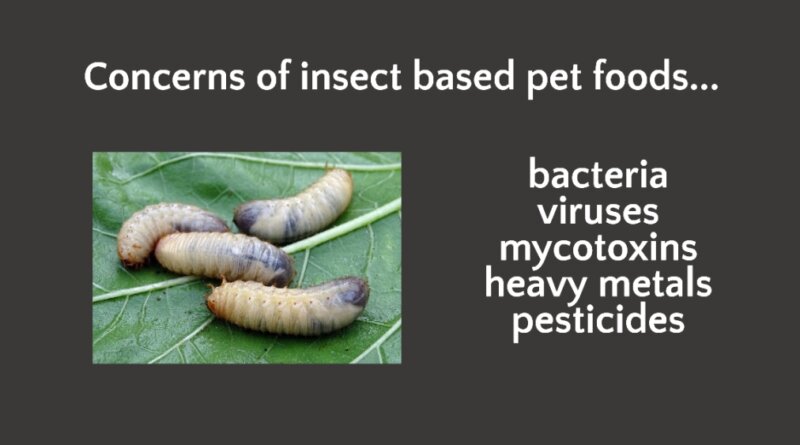Are Insects in Pet Food Safe? – Truth about Pet Food
A new report from FAO suggests there are some concerns pet owners should be aware of with insect based pet foods or treats.
The Food and Agriculture Organization of the United Nations (FAO) published a document titled “Looking at Edible Insects from a Food Safety Perspective.” While the document is overall addressing food safety concerns for humans consuming insects, many of the same concerns relate to pets consuming an insect based pet food or treat.
Insect based pet foods and treats are pitched as a protein alternative that is environmentally friendly. The FAO paper confirms that insect farming has a lower water use and land use footprint and contributes significantly less to global warming potential than livestock production. However, the risks of insects appear to be directly linked to the farming practices (which is currently unregulated).
Quoting the FAO paper:
“Unlike other livestock, insects are consumed in their entirety which necessitates paying close attention to how insects are farmed and processed. Insects can accumulate contaminants from their feed or housing materials. Due to their small size, it can be difficult to decontaminate harvested insects, and any eventual contamination may be carried along the production and processing chain.”
From FoodSafetyNews.com:
“Possible food safety hazards for edible insects are biological, including bacteria, viruses, fungi, parasites, chemical hazards including mycotoxins, pesticides, heavy metals, antimicrobials, and physical hazards.”
The added concern for pet owners would be feed grade insects. Unlike other pet food protein sources, insects could be raised strictly for feed (pet food and livestock feed). Knowing that feed grade ingredients are not held to the same safety standards as food grade ingredients, insects raised strictly for feed could pose a significantly higher risk.
For pet owners considering an insect based pet food or treat – ask the manufacturer if the insects would be considered human edible.
Another consideration of these pet foods is bioavailability of nutrients. The FAO paper stated:
“The insects were also found to be good sources of micronutrients like iron, zinc, magnesium, manganese, phosphorus, selenium and zinc. However, at present there is insufficient information as to the bioavailability of these micronutrients.”
The question we have – is there sufficient science to prove that insect based pet foods provide complete nutrition that pets can utilize? A laboratory analysis can verify that all required nutrients are in the pet food, but IF the pet cannot utilize those nutrients health concerns would occur.
It is quite concerning that FDA has allowed pet foods labeled as complete and balanced in the market place without first addressing the farming practices of insects and the bioavailability of nutrients. Which means, pet owners providing these pet foods to their pets must do additional homework. In addition to asking the manufacturer if the insects are feed grade or human grade, ask the pet food manufacturer for evidence of a feeding trial (preferably a year or longer) to prove nutrient bioavailability.
Wishing you and your pet(s) the best,
Susan Thixton
Pet Food Safety Advocate
Author Buyer Beware, Co-Author Dinner PAWsible
TruthaboutPetFood.com
Association for Truth in Pet Food

Become a member of our pet food consumer Association. Association for Truth in Pet Food is a stakeholder organization representing the voice of pet food consumers at AAFCO and with FDA. Your membership helps representatives attend meetings and voice consumer concerns with regulatory authorities. Click Here to learn more.
What’s in Your Pet’s Food?
Is your dog or cat eating risk ingredients? Chinese imports? Petsumer Report tells the ‘rest of the story’ on over 5,000 cat foods, dog foods, and pet treats. 30 Day Satisfaction Guarantee. Click Here to preview Petsumer Report. www.PetsumerReport.com
Find Healthy Pet Foods in Your Area Click Here

The 2021 List
Susan’s List of pet foods trusted to give her own pets. Click Here to learn more.



